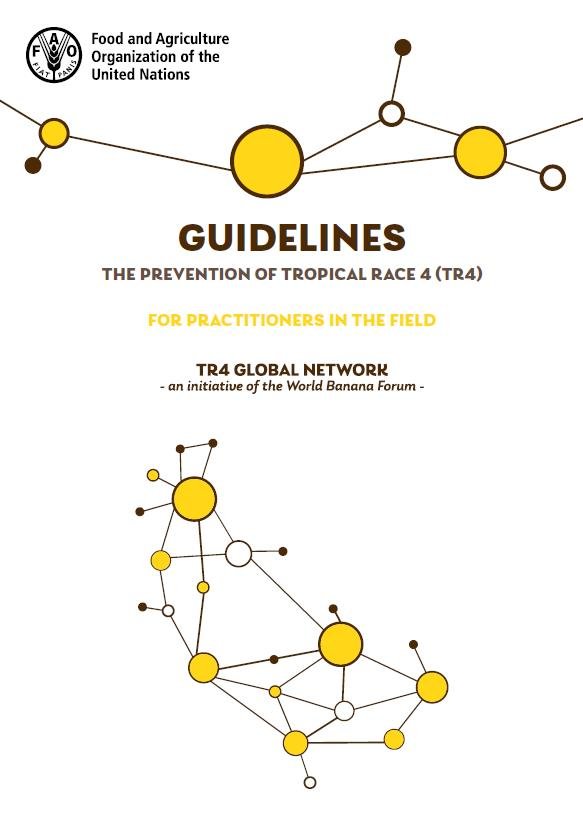 Read this article in French
Read this article in French- Share this article
- Subscribe to our newsletter
Guidelines: The prevention of Tropical Race 4 (TR4)
The Guidelines on the prevention of Tropical race 4 (TR4) for practitioners in the field were developed by the facilitators of the TR4 Global Network (TR4GN). They aim to provide farmers and extension workers with support to create their own TR4 prevention plans. Rather than ready-made solutions, the guidelines are frameworks that each farmer/grower or extension staff worker can use to begin to customise specific local solutions.
Based on information gathered by the Food and Agriculture Organization of the United Nations (FAO) in consultation with various regional, national, and international stakeholders and actors, the guidelines offer advice to farmers and extension workers on how to develop a TR4 action plan; how to develop a TR4 risk management plan; how to check compliance with biosecurity measures according to international standards; and how to develop TR4 communication materials (mainly for extension agents).
TR4 was first detected in Asia over 40 years ago, subsequently arrived in Africa in 2013, and reached Latin America in 2019. Today the main ways in which TR4 is spread, are:
- planting materials, grown in contaminated soil and usually carrying the pathogen even without symptoms;
- physically, through the movement of the contaminated soil, e.g. machinery and equipment, vehicles, tools, clothing and footwear could carry and spread TR4; and
- irrigation – drainage water, surface run-off water and floods can transmit TR4 from infested fields to neighbouring areas.
Prevention is the main strategy to combat TR4 because there is no way of eliminating the fungus once it is in the soil. Fungicides and soil fumigants are not efficient in controlling or eradicating the TR4 from infested soil, the spores of the fungus could survive in the soil for decades.
(FAO/ile)
Read more and download the publication at FAO website





Add a comment
Be the First to Comment